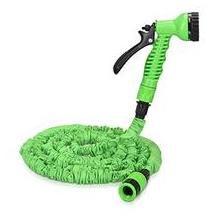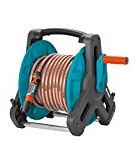Garden pump purchasing advice: how to choose the right product
- The most important facts in brief
- A garden pump enables simple and uncomplicated garden irrigation using rainwater or well water by means of a connected garden hose.
- A garden sprinkler can also be connected to a classic garden pump without any problems. Depending on the capacity, the use of several sprinklers is also possible without any problems.
- As an alternative to the classic garden pump, a submersible pump can also be used, which is positioned directly in the water.
Water march – the garden pump in action
The nostalgic swing pump has long been out of use and the modern garden pump has now taken its place. It pumps water without muscle power, is pleasantly quiet and is a pleasantly low-maintenance garden tool.
Simple and cost-effective: watering the garden with a garden pump
Drinking water is a valuable commodity. Many garden owners want to avoid high costs and therefore use well water or collected rainwater to water the garden. In earlier times, the aforementioned swing pump was used to pump the water out of the well and used for various purposes. Since muscle power had to be used here, this process could be very laborious and arduous. Fortunately, these times are long gone and the swing pump is only used by nostalgic people. A modern garden pump is driven by an electric motor and thus makes water transport much easier. These practical garden tools are used in many gardens today and provide good services for watering the garden.
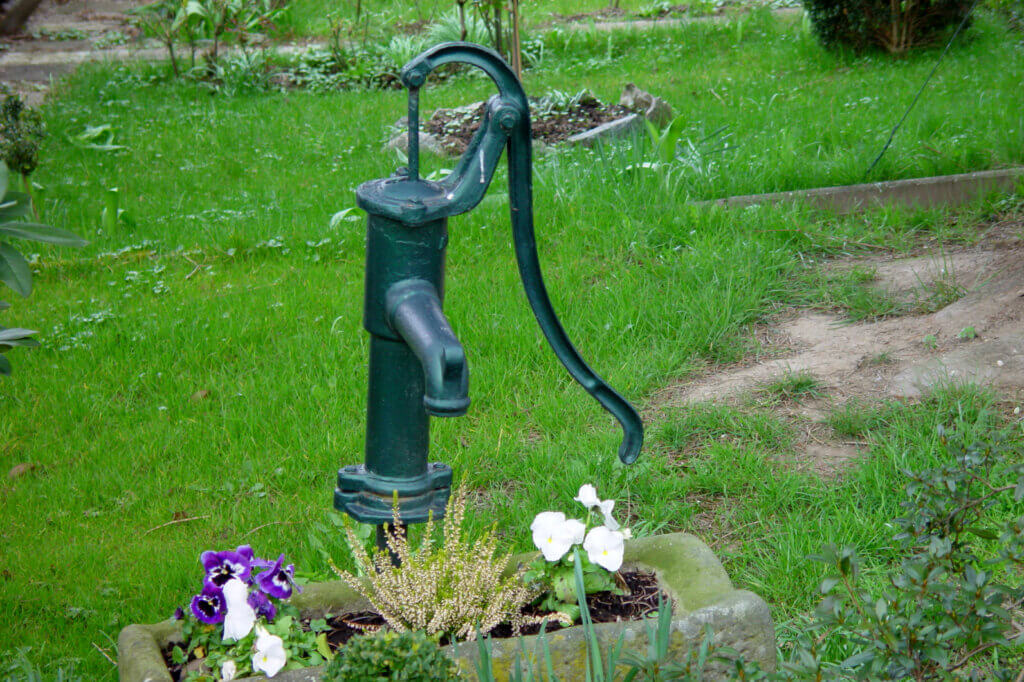
Collecting rainwater as an alternative to a well
Not every property owner has a well. A cost-effective alternative to having one’s own well or using expensive drinking water from the tap is to collect rainwater. Rainwater barrels or the larger cisterns are used for this purpose. However, the question that usually arises in this context is how the water from the well, rainwater barrel or cistern gets to the thirsty plants. In principle, the water can easily be filled into a watering can via a tap and laboriously dragged to the beds. In larger gardens, however, this can become quite a strenuous and tedious task, which is why many garden owners are looking for a better solution.
This is where the practical garden pump comes in, which is equipped with an electric motor and pumps the water out of the respective container independently without the use of muscle power. With the garden hose connected, the proud garden owner can now easily water flowers, shrubs and trees or the well-tended lawn. Since the pressure of most garden pumps is high enough, even garden sprinklers can be connected here and garden irrigation takes place almost without human intervention.
Garden pump or submersible pump: the differences
When looking for a new garden pump, garden owners will find many models from different manufacturers that do not differ significantly in terms of functionality. A look in the relevant departments of garden centres or DIY stores shows that, in addition to the garden pump, there is also the submersible pump. In contrast to the classic garden pump, this model is placed in the water and can also be used for other purposes. The following overview of the respective advantages and disadvantages shows which model is really suitable for the respective area of application.
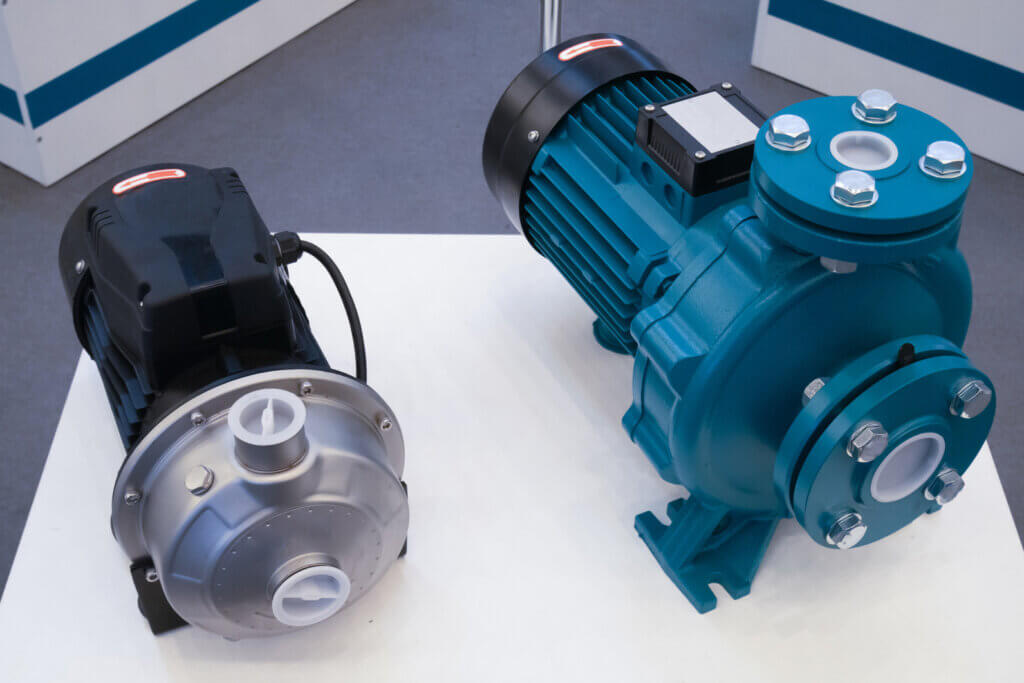
The garden pump: advantages and disadvantages
A garden pump is often referred to as a domestic waterworks and works according to the jet pump principle. This pumping principle uses only a comparatively small impeller. There is little mechanical friction and correspondingly little wear. Before use, the pump is filled with water via the inlet and set in motion. A small impeller is connected to the pump chamber via a nozzle system. The motor of the garden pump drives the impeller and negative pressure is created in the nozzle chamber through which the water is sucked in. The nozzle system guides the sucked-in water over the impeller and to the discharge connection.
Even if no water is drawn off, the pump remains in operation and a jet stream is created inside as the water moves through the nozzle and impeller. This jet is sufficient to draw in water above a certain level.
Pro points
- Low wear
- Very durable
- Light and handy
- Mobile use
- Generates higher water pressure
- Also suitable for use with garden sprinklers
- Favourable purchase price
Drawbacks
- Weather protection required
- Regular emptying required
- Relatively loud
The submersible pump: advantages and disadvantages
Unlike the conventional garden pump, a submersible pump is waterproof and is sunk directly into the water. The encapsulated housing contains the electric motor that drives the paddle wheel located in the water-bearing area of the pump. Water is sucked in from below through the opening in the housing, transported through the paddle wheel into the collection channel and to the discharge nozzle.
This pump offers a wide range of applications and is used, for example, by the fire brigade. In the private sector, it is often used to pump out the pool. In flooded areas or after a burst water pipe, many homeowners also benefit from the flexible use of the submersible pump, which can be used to pump water out of the cellar without any problems.
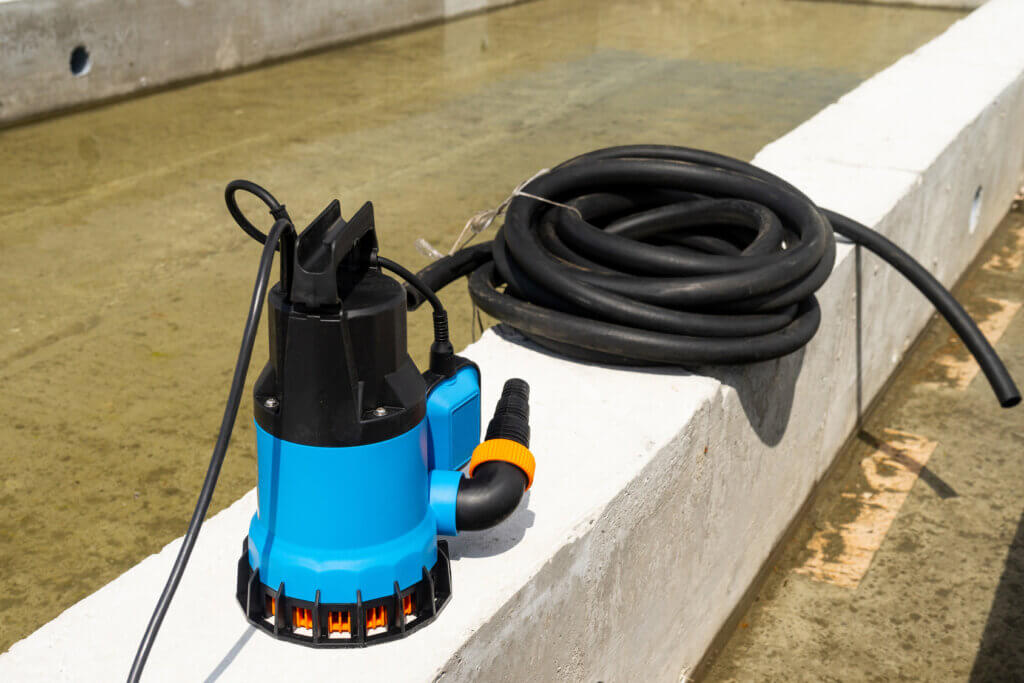
Pro points
- Easy handling
- Small and compact
- Transportable
- Specialised in high flow rates
- Generates higher water pressure
- High efficiency
Drawbacks
- Residual water is not absorbed
- More expensive than the conventional garden pump
Pay attention to the height of the float switch
The float switch to prevent the submersible pump from running dry should not be positioned too high. If it is positioned too high, a larger amount of residual water will remain.
Finding the optimal garden pump
Finding the right garden pump depends primarily on individual requirements and the intended use. The following criteria in particular are decisive for the purchase decision:
- Intended use
- Budget and purchase price
- Performance
- Flow rate
- Delivery head & suction height
- Scope of delivery & accessories
The intended use: What do I need the pump for?
Garden pump or submersible pump – the decision is primarily determined by the intended use. For users who only occasionally want to water their garden with the garden hose, a handy and mobile garden pump is perfectly adequate. It also offers the advantage that garden sprinklers can also be connected. A submersible pump is not suitable because it cannot build up the required pressure. In flooded areas, the submersible pump is the better choice, as it can also be used to pump water out of the cellar after a flood.
Budget and purchase price: How much should the pump cost?
Submersible pumps are usually much more expensive than conventional garden pumps. The latter are often available at a purchase price of 50 to 100 euros; for sporadic use for watering the garden, these models are perfectly adequate. Expensive premium models for 300 euros or more are more useful for larger and parallel irrigation or drainage projects.
The power: How many watts does the pump have?
The indicated wattage indicates the pressure with which the water is conveyed and transferred. The respective delivery capacity depends on the delivery length and delivery pressure. For domestic use, a garden pump with 600 to 750 watts is perfectly adequate. It can be used to water the garden from time to time and it is also no problem to connect one or two garden sprinklers.
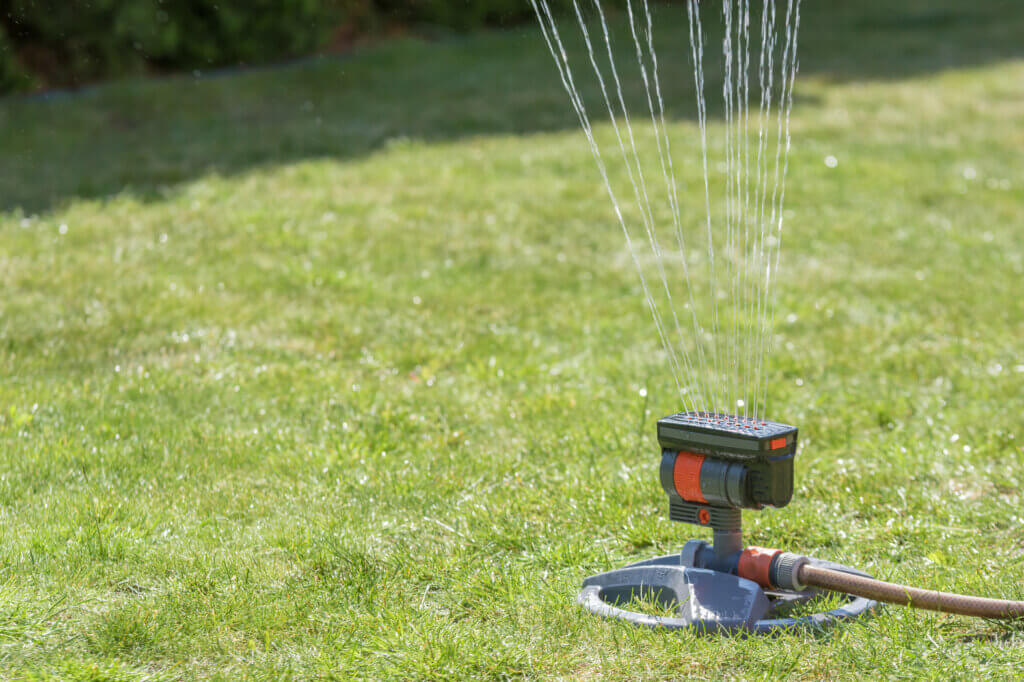
The flow rate: Is it large enough?
With higher performance, the flow rate automatically increases; this value is usually stated in the product description. For occasional garden watering, a garden pump with a flow rate of 3,500 to 4,000 litres is perfectly adequate. To fill a pool, a little more water is needed. In this case, the delivery rate should be more than 4,000 litres.
The delivery head: The path of the water
The term delivery head refers to the difference in height between the water surface and the point where the water is drawn off. The total distance that the water has to travel must therefore be taken into account here. For example, if water is pumped from a five-metre-deep well and directed to the garden sprinkler positioned 17 metres away, the total distance is 22 metres. Most garden pumps reach a delivery head of more than 40 metres. The term suction head is often used in the product description. This value indicates the maximum distance that can be covered between the water surface and the garden pump.
Scope of delivery and accessories: What is included?
The scope of delivery can vary somewhat depending on the manufacturer and model. Often, screw-on connection adapters are included, but suction hoses are usually not included and must be purchased separately.
Pay attention to the valve size
To avoid an annoying wrong purchase, you should definitely pay attention to the correct valve size. As a rule, 1 to 1.2 inches is the right choice; if in doubt, it is worth taking a look at the instruction manual. You should also make sure that the hose is the right length.
Tips on connection and care
Connecting the garden pump is relatively uncomplicated in most cases. In principle, users should read the instruction manual in advance to ensure optimal functionality and to avoid problems. Here you will find instructions regarding the optimal location. The following tips are only intended to explain the procedure and in no way replace the instructions of the respective manufacturer.
Connecting the garden pump correctly
In terms of their construction, garden pumps can be divided into those with a plug-in system and those with a screw system. A plug-in system bears the risk that air can get into the system during the suction process. The screw system is therefore more recommendable, as it guarantees an airtight connection.
- On the suction side, the suction hose is securely attached to the garden pump.
- On this occasion, the seal should be checked and an additional sealant used if necessary.
- On the pressure side, the hose connection is also made.
- The garden pump is now connected to the mains.
- Before switching on, water is filled into the garden pump.
- During a test run, check whether there are any air pockets. This is indicated by a loud noise development and an unsteady running of the pump.
- If this is the case, the entire system should be checked for leaks.
Practical tips for proper care
Ideally, a garden pump will be in use for many years and provide continuous good service. Although the garden tool is comparatively low-maintenance, users should nevertheless pay attention to some care from time to time to ensure the longest possible service life. A comprehensive cleaning of the garden pump is necessary at least once a year, and depending on the operating hours and the area of use, a further annual cleaning campaign may be advisable. However, cleaning should not only be carried out when there are already restrictions in functionality. Due to the high volume of water transported, it is unavoidable that deposits and dirt accumulate. The following tips will help with cleaning:
- Clean the garden pump thoroughly at least once a year.
- Before cleaning, disconnect the garden pump from the power source for safety.
- Regularly check submersible pumps for blockages on the suction side and remove them if necessary so that the pump does not run dry.
- For the annual cleaning, disassemble the garden pump and rinse all individual parts with clean water.
- For stubborn dirt, a mild cleaning agent will also help.
- How the garden pump should be disassembled for cleaning is usually explained in the instructions for use.
- Cleaning the filter is particularly important, and care should be taken here to avoid damaging the sensitive component.
- Clean the lines and hoses of impurities.
- In the course of the annual cleaning campaign, always inspect the individual components carefully in order to detect possible defects (e.g. in the susceptible non-return valve) in good time.
- Store the pump over the winter. Winter storage outdoors is not recommended, as freezing water inside the garden pump can cause damage.
- Before storing the pump, drain it carefully, clean it thoroughly and cover it.
- A dry, frost-free and not too cold location is recommended for storage.

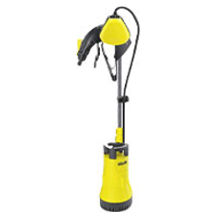

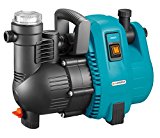
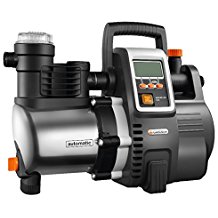

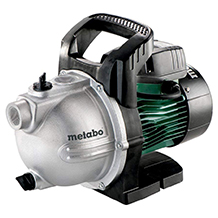
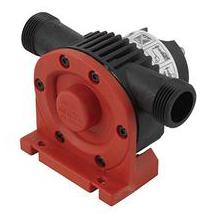
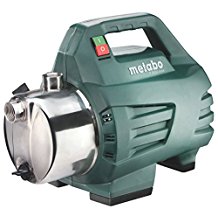
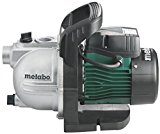
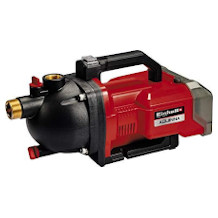
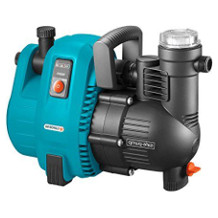
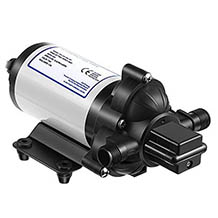

 3,989 reviews
3,989 reviews




